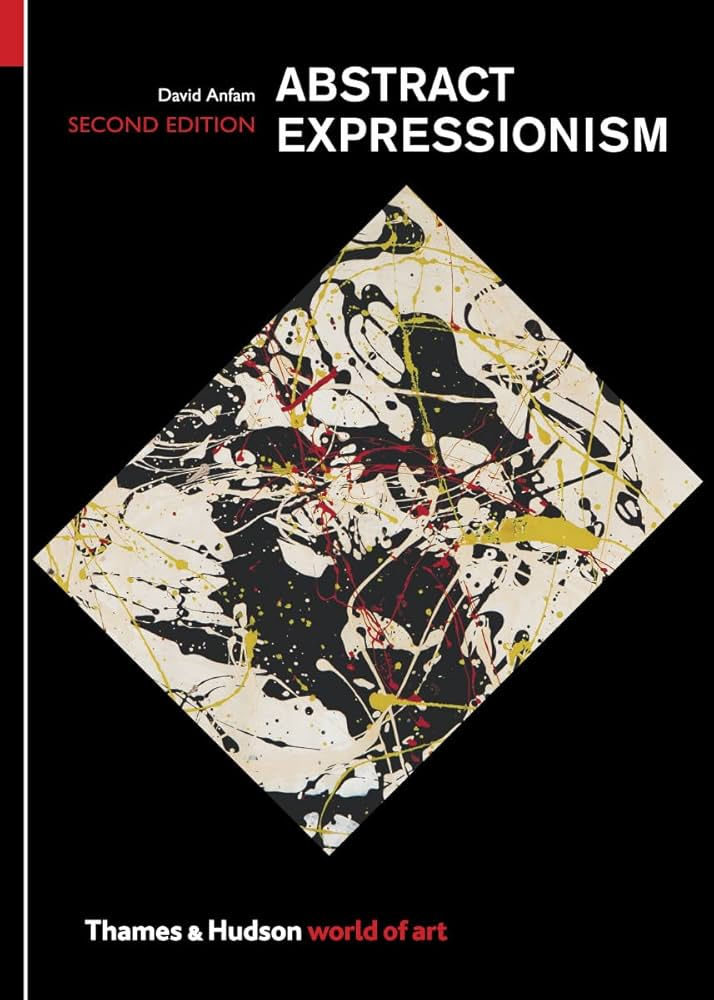A Comprehensive Study of Abstract Expressionism
- ONOTABI Editorial Team

- 15 nov 2024
- 3 minuten om te lezen
Bijgewerkt op: 24 dec 2024
David Anfam’s Abstract Expressionism (1990) stands as one of the most authoritative and detailed explorations of this revolutionary mid-20th-century art movement. Through a meticulous examination of its historical, cultural, and artistic contexts, Anfam provides readers with a profound understanding of the forces that shaped the emergence and evolution of abstract expressionism in post-war America. His work bridges the gap between scholarly analysis and accessibility, making it a seminal resource for art historians and enthusiasts alike.

Source: David Anfam - New York Times
The Historical and Cultural Zeitgeist Anfam situates abstract expressionism against the backdrop of a turbulent and rapidly changing post-World War II world. He emphasizes how the political and social uncertainties of the time—marked by the Cold War, economic recovery, and shifting cultural norms—inspired artists to seek new, personal, and emotive ways of expression. This movement, which thrived in New York City, became America’s first major contribution to global modern art, redefining the nation's cultural identity in the process.
Profiling Iconic and Overlooked Artists The book goes beyond simply celebrating renowned figures such as Jackson Pollock and Mark Rothko. Anfam provides a layered exploration of these artists, delving into Pollock's pioneering "drip painting" technique and Rothko's ethereal use of color fields to evoke spiritual transcendence. What sets Anfam’s approach apart is his inclusion of lesser-known contributors, such as Clyfford Still and Lee Krasner, who played pivotal roles in shaping the movement. By doing so, Anfam underscores the diversity and complexity of abstract expressionism, presenting it not as a monolithic style but as a tapestry of individual voices.
Dissecting Techniques and Themes Anfam excels in breaking down the technical and thematic innovations that define abstract expressionism. He unpacks the significance of scale, texture, and gestural brushwork, illustrating how artists moved beyond traditional figurative representation to create works that engage viewers on a visceral level. The recurring themes—freedom, individuality, and the search for universal truths—are explored with clarity, allowing readers to grasp both the intellectual and emotional depth of the art.
Emotional Resonance and Viewer Engagement One of the book’s standout qualities is Anfam’s ability to translate the emotive power of abstract expressionist works. His vivid descriptions and thoughtful analyses encourage readers not just to observe these pieces but to feel them. This approach mirrors the artists’ own intentions, aiming to provoke a direct, personal reaction from the viewer. Anfam’s narrative thus deepens the reader's connection to the art, fostering a more intimate appreciation of its impact.
Lasting Influence on Modern Art The book situates abstract expressionism as a watershed moment in the history of art, marking a departure from European dominance and laying the groundwork for subsequent movements such as minimalism, conceptual art, and pop art. Anfam explores how this shift redefined artistic practices and challenged traditional notions of what art could be, leaving an indelible mark on both the American and global art scenes.
Illustrative Richness and Scholarly Rigor Visually, Abstract Expressionism is a feast for the eyes. Its extensive collection of high-quality images not only supports Anfam’s textual insights but also serves as a standalone visual journey through the movement. This balance of analytical depth and illustrative support makes the book a multi-dimensional resource for understanding the art and its creators.
Accessibility vs. Academic Detail Anfam’s writing is both rigorous and accessible, avoiding dense jargon while maintaining scholarly integrity. However, some readers may find certain sections overly detailed, particularly where Anfam delves deeply into specific works or lesser-known artists. Yet, this level of detail highlights the author’s commitment to providing a comprehensive understanding of the subject, making the book a valuable reference for in-depth study.

A Masterwork of Art Scholarship David Anfam’s Abstract Expressionism is more than a book; it is an intellectual and emotional journey into one of modern art’s most transformative periods. By seamlessly blending historical analysis, technical insights, and evocative interpretations, Anfam offers a panoramic view of a movement that forever altered the course of art. For anyone seeking to understand or deepen their appreciation of abstract expressionism, this book is an essential read—a guide to the passion, innovation, and humanity at the heart of this groundbreaking era.



Opmerkingen